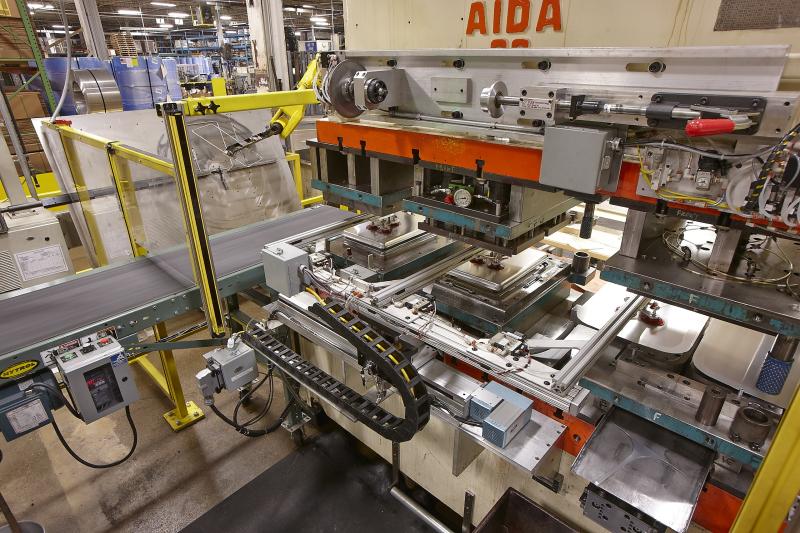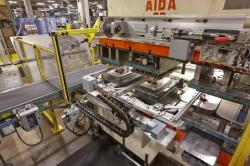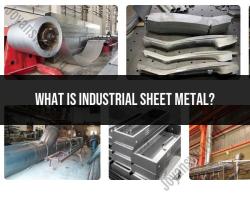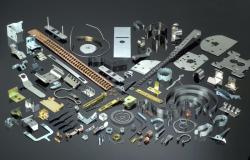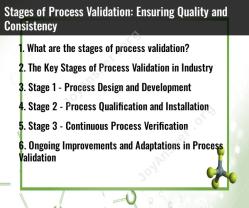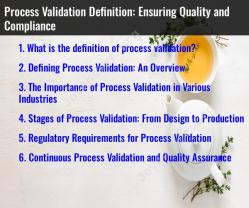How to use metal stamping?
Metal stamping is a manufacturing process that involves using dies and presses to shape, cut, or form metal sheets into desired shapes or parts. Here is a general guide to using metal stamping:
Design and Engineering:
- Begin with the design of the part or component you want to create. This involves specifying the dimensions, tolerances, and any other relevant details.
- Engineers may use computer-aided design (CAD) software to create precise digital models of the part.
Tool and Die Design:
- Develop the tooling, which includes the creation of dies. Dies are specialized tools used in metal stamping to cut or shape the metal.
- Dies can be categorized as:
- Blanking Dies: Used to cut the metal into a desired shape.
- Piercing Dies: Create holes in the metal.
- Forming Dies: Shape the metal without cutting.
Material Selection:
- Choose the appropriate metal sheet for your application. Common materials include steel, aluminum, copper, and stainless steel.
- The thickness of the metal, known as the gauge, is a crucial consideration.
Set Up the Press:
- Select a stamping press suitable for the project. Stamping presses come in various types, including mechanical presses, hydraulic presses, and servo presses.
- Install and secure the dies into the press. Proper alignment is crucial for accurate stamping.
Feeding the Material:
- Load the metal sheet into the stamping press. This can be done manually or using automated feeding systems.
- The material should be properly aligned to ensure accurate stamping.
Stamping Process:
- Activate the press to bring the dies together, shaping or cutting the metal sheet according to the die design.
- The force applied by the press and the duration of the stamping process are critical factors.
Quality Control:
- Inspect the stamped parts for quality and accuracy.
- Check for any defects, such as burrs or deformities, and ensure that the parts meet the specified tolerances.
Secondary Operations:
- After stamping, additional processes may be required, such as deburring, surface treatment, or assembly.
- Some parts may undergo additional forming or bending operations.
Packaging and Shipping:
- Once the stamped parts have passed quality control and any necessary secondary operations, they can be packaged for shipment.
Maintenance and Troubleshooting:
- Regularly maintain the stamping press and dies to ensure optimal performance.
- Troubleshoot any issues that may arise during the stamping process, such as misalignment or wear on the dies.
It's important to note that metal stamping is a specialized process that requires expertise in tool and die design, press operation, and quality control. Many manufacturers may choose to work with experienced metal stamping professionals or companies to ensure the successful production of stamped metal parts.
Metal Stamping: Shaping Metal for Industry
Metal stamping is a versatile and powerful manufacturing process that uses a press and a die to transform flat sheet metal into various shapes and forms. It is widely used in various industries, from automotive and aerospace to construction and appliances.
Applications and Uses
Metal stamping is used to manufacture a wide variety of products, including:
- Automotive: Car bodies, chassis parts, engine components, and various interior and exterior trim pieces.
- Aerospace: Aircraft structural components, engine casings, and landing gear parts.
- Construction: Roofing panels, building materials, ventilation ducts, and structural supports.
- Electronics: Electronic casings, heat sinks, circuit board components, and connectors.
- Appliances: Washing machine tubs, stovetop components, refrigerator panels, and oven doors.
- Medical devices: Surgical instruments, prosthetics, and medical equipment housings.
The Metal Stamping Process
The metal stamping process consists of the following steps:
- Die design and production: Specialized dies are designed and manufactured to create the desired shape in the metal. These dies typically consist of a punch and a die block that work together to form the metal.
- Material preparation: Sheet metal is selected based on the desired properties and cut to the appropriate size and thickness.
- Feeding the press: The metal sheet is then fed into the stamping press, either manually or through an automated feeding system.
- Stamping: The press activates, pushing the punch down onto the metal sheet against the die block. This forces the metal to conform to the shape of the die, creating the desired form.
- Trimming and finishing: Excess material, known as burrs, may be trimmed off, and the stamped part may undergo additional finishing processes like cleaning, polishing, or coating.
Considerations for Effective Metal Stamping
The following considerations are important for effective metal stamping:
- Material selection: Choosing the right metal with appropriate properties like strength, ductility, and formability is crucial for successful stamping.
- Die design: Optimal die design is essential for ensuring accurate and efficient stamping while minimizing scrap and production time.
- Press selection: The type and capacity of the stamping press must be suitable for the material thickness and complexity of the desired shape.
- Safety protocols: Proper safety procedures and equipment are vital to protect workers from potential hazards during the stamping process.
- Cost optimization: Balancing material costs, die fabrication costs, and production efficiency is crucial for cost-effective metal stamping.
Conclusion
By understanding the applications, process, and considerations of metal stamping, manufacturers can leverage its vast potential to create a wide range of products efficiently and cost-effectively.
